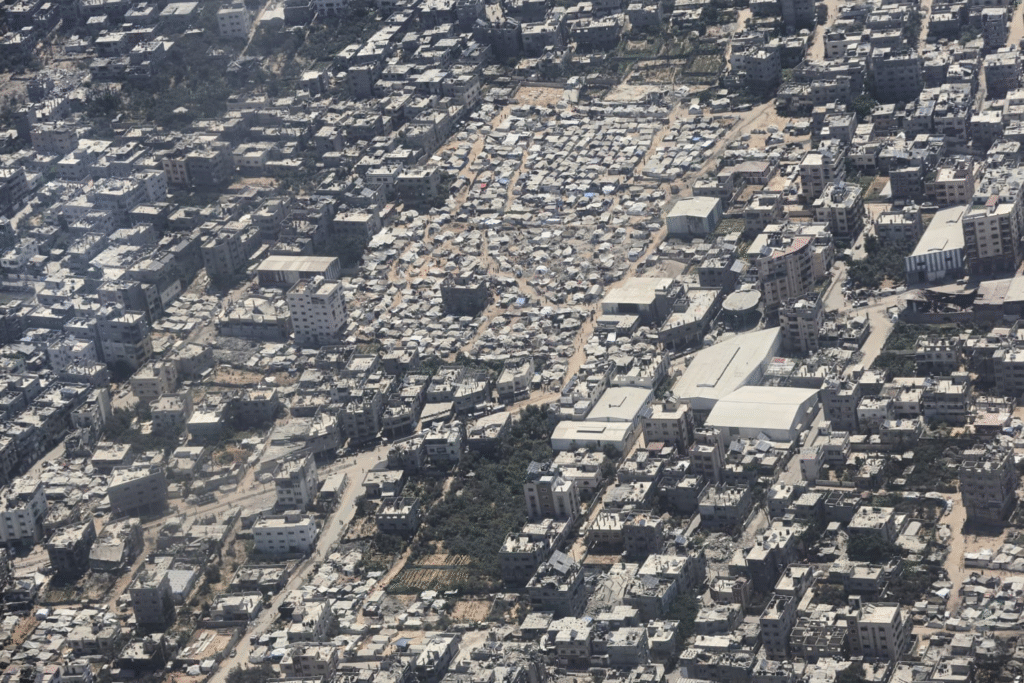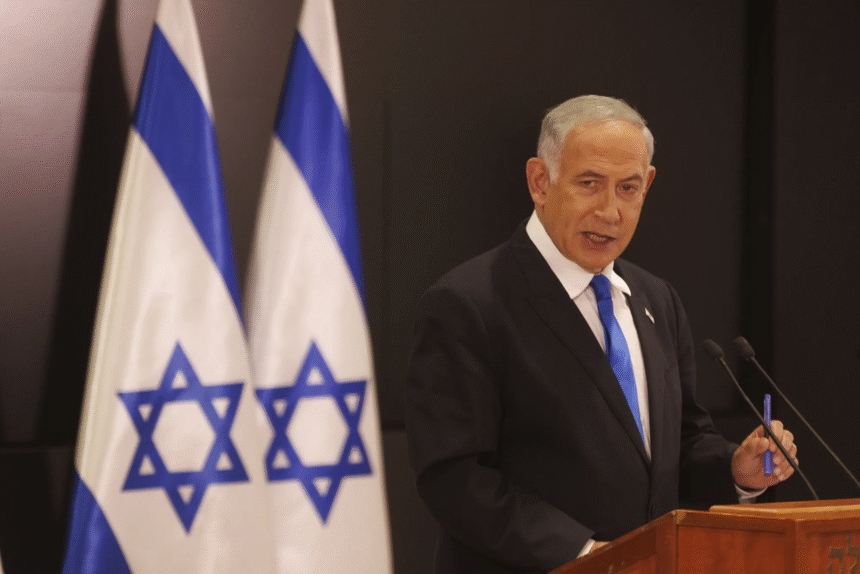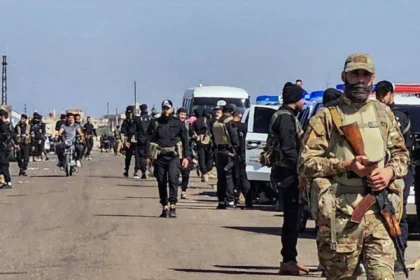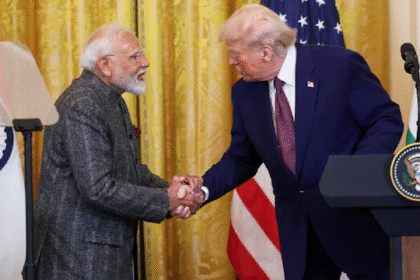Netanyahu’s Gaza City Takeover Plan Gets Final Cabinet Nod — 5 Key Moves That Could Redefine the Israel-Hamas War
Israel’s cabinet approves PM Netanyahu’s Gaza City takeover plan, marking a major shift in the Israel-Hamas war. Here are 5 key developments and what they mean for the conflict’s future
The statement added that the majority of the cabinet members believed that the “alternative plan” presented to them would not achieve “the defeat of Hamas nor the return of the hostages.”
While the statement did not elaborate on the alternative plan presented to the security cabinet, it likely refers to the proposal presented by IDF Chief of Staff Eyal Zamir, who has opposed the Israeli prime minister’s plans over humanitarian concerns and risking the lives of the hostages.
Despite his plans for taking over the territory, Netanyahu said that his country has no intention of annexing Gaza. “We want Gaza to be taken over by a governing body. No plans to annexe Gaza.” He added that rather than occupation, Israel aims to establish a “defence parameter around Gaza” to ensure security without territorial expansion.

The majority of cabinet members also backed five principles for ending the war with Hamas:
1. Disarming Hamas of its weapons.
2. Return of all hostages – both the living and the deceased.
3. Demilitarisation of the Gaza Strip.
4. Israeli security control over the Gaza Strip.
5. Establishment of an alternative civilian administration that is neither Hamas nor the Palestinian Authority.
Meanwhile, protests have erupted across the country as Israelis accuse the government of continuing the war for political gains. However, Netanyahu has pushed for a complete takeover of Gaza despite international and domestic pressure.
In a decision that could dramatically reshape the trajectory of the Israel-Hamas conflict, Israeli Prime Minister Benjamin Netanyahu has secured final cabinet approval for his controversial proposal to take over Gaza City, the heart of the Gaza Strip and a long-standing stronghold of Hamas. This move signals a strategic escalation in Israel’s military campaign and introduces new complexities into an already volatile Middle East security landscape.
The plan, described by Netanyahu as a “necessary step to dismantle Hamas’s operational control,” comes amid mounting international pressure for a ceasefire and growing domestic calls for decisive action following months of intense fighting. While some view it as a pivotal move toward ending Hamas’s military capacity, others warn it could deepen the humanitarian crisis and trigger wider regional instability.
Netanyahu’s proposal was debated fiercely within the Israeli cabinet, where differing political factions weighed the potential military gains against diplomatic fallout. The final approval reflects both the prime minister’s determination to strike at Hamas’s core and his ability to rally key ministers behind his vision.
Sources inside the meeting suggest that the security establishment presented intelligence indicating that Hamas’s command network remains deeply entrenched within Gaza City, despite sustained Israeli airstrikes over the past months. According to these assessments, only a direct military occupation could break the group’s ability to coordinate attacks.

Politically, Netanyahu’s approval comes at a sensitive time. With his coalition government under pressure and public opinion split, the move can be seen as both a strategic military decision and a political gambit to reinforce his leadership image as a wartime prime minister.
The takeover plan reportedly involves a multi-phase military operation, combining intensified airstrikes, ground incursions, and targeted raids on suspected Hamas strongholds.
Key elements include:
Encirclement Strategy: Israeli Defense Forces (IDF) would surround Gaza City from multiple entry points, cutting off supply routes and escape corridors for Hamas operatives.
Urban Warfare Units: Specialized IDF units trained in urban combat will be deployed, supported by drones and AI-assisted surveillance to track militant movements in real time.
Targeted Demolitions: High-value Hamas infrastructure—such as weapons depots, command centers, and tunnel networks—will be destroyed to cripple operational capacity.
Cordon-and-Search Operations: House-to-house searches to root out fighters and weapons, a method that carries both strategic value and humanitarian risk.
This approach, however, poses significant dangers. Gaza City’s dense population and labyrinthine streets make it a challenging battlefield, increasing the risk of civilian casualties and potential international backlash.
For Netanyahu and his military advisers, the central objective is clear: remove Gaza City from Hamas’s control, thereby dismantling the group’s ability to coordinate large-scale attacks on Israel.
Military analysts argue that Gaza City functions as the “nerve center” for Hamas—hosting leadership compounds, training facilities, and underground bunkers linked through an extensive tunnel network. Neutralizing this hub, they believe, could deal a crippling blow to the group’s command-and-control capabilities.
Netanyahu has framed the takeover as essential not just for Israel’s immediate security, but also for deterring future threats from other militant groups in the region, including those backed by Iran.

While Israeli officials emphasize security, the humanitarian implications of such a large-scale urban operation are profound. Gaza City is home to over 600,000 residents, many of whom are already displaced due to months of bombardment.
International aid agencies warn that the operation could lead to:
Mass Displacement: Tens of thousands more civilians may be forced to flee, overwhelming already strained refugee camps.
Infrastructure Collapse: Damage to water, electricity, and healthcare systems could accelerate the humanitarian crisis.
Blockage of Aid Deliveries: Military encirclement may hinder relief supplies, increasing the risk of famine and disease outbreaks.
The United Nations and several human rights organizations have urged Israel to implement strict measures to protect civilians, though similar calls in past conflicts have yielded limited results on the ground.
The decision has already sparked strong reactions on the world stage.
United States: While Washington remains Israel’s staunch ally, senior U.S. officials have expressed concerns about prolonged urban warfare, urging Israel to balance military objectives with humanitarian obligations.
Arab Nations: Egypt and Jordan, key mediators in past ceasefires, warn that the takeover could ignite wider unrest in the region and undermine fragile diplomatic channels.
Iran and Hezbollah: Tehran has condemned the move, and Hezbollah has hinted at potential escalation along Israel’s northern border if the operation proceeds aggressively.
Europe: Several European leaders have called for restraint, warning that the takeover could jeopardize peace initiatives and fuel radicalization.
Diplomatic analysts note that Netanyahu’s decision could reframe Israel’s long-term strategy—moving from a containment approach to direct territorial control—something that would have far-reaching consequences for Israeli-Palestinian relations.
The approval of the takeover plan sets the stage for one of the most consequential military campaigns in Gaza in recent decades. Several scenarios could unfold:
Swift Military Success: If the IDF manages to seize Gaza City quickly and dismantle Hamas’s command structure, Israel could claim a decisive victory, though governing the area would pose its own challenges.
Protracted Urban War: Given the complexity of Gaza City’s terrain, the operation could drag on for months, draining resources and testing public patience in Israel.
Regional Escalation: Hezbollah or other militant factions could open new fronts, forcing Israel into a multi-front conflict.
Diplomatic Intervention: Intense international pressure could halt the operation before its objectives are fully met, leading to a negotiated settlement or partial withdrawal.
Netanyahu’s Gaza City takeover plan represents a watershed moment in the ongoing Israel-Hamas war. By securing cabinet approval, he has committed Israel to a high-risk, high-reward strategy aimed at neutralizing Hamas’s central command. The coming weeks will reveal whether this gamble reshapes the conflict in Israel’s favor—or plunges the region into deeper turmoil.
For now, one thing is clear: the battle for Gaza City will not only determine the course of the Israel-Hamas war but could also redefine Israel’s security doctrine and its place in an increasingly unstable Middle East.








